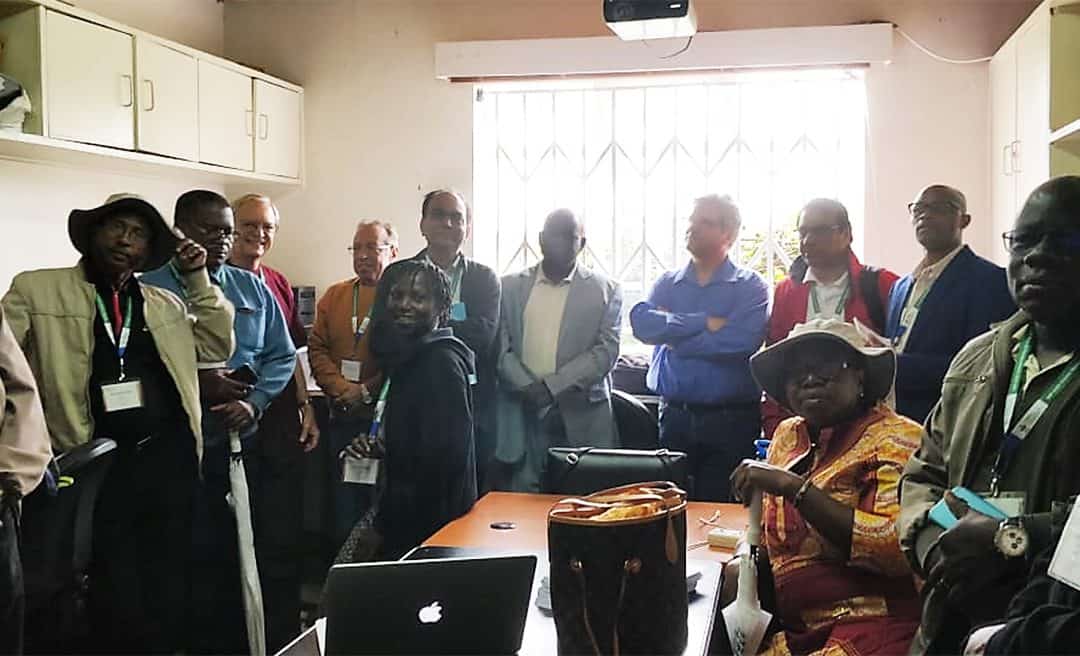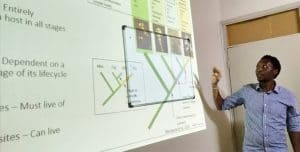
The CGIAR Research Program on Grain Legumes and Dryland Cereals (CRP-GLDC) held its annual ‘Science Meeting’ in Nairobi, Kenya from 25-29 November, 2019. As part of this meeting, CRP-GLDC organised a one-day exposure visit to the Plant Transformation Laboratory (PTL) at Kenyatta University in Nairobi, Kenya. The team visited the highly successful research centre, housed in the Department of Biochemistry and Biotechnology of the University, and interacted with Professor Steven Runo and his team on Striga hermonthica, one of the major parasitic weeds, also called the ‘witch weed’, and a major parasite to GLDC cereals- sorghum, finger millet and pearl millets. Prof. Runo himself referred to Striga hermonthica as a “cereal killer” in his recent review, published in one of the highly cited scientific Journals, PloS Pathogens. (https://journals.plos.org/plospathogens/article?id=10.1371/journal.ppat.1006731).

Led by Professor Steven Runo, who also doubles as the Department Chairman, the research focus is on the biology of parasitic weeds. Accompanied by one of the postgraduate students, Prof. Runo impressively summarised the research activities of the lab. Supervising over 20 postgraduate male and female students, Prof. Runo executes his research through training and mentorship. His determination to eradicate the “cereal killer” is evidenced by the number of publications on Striga hermonthica biology in different crops, ranging from maize, rice and sorghum, with more publications on finger millet and pearl millet in preparation. The visitors were also taken around the facility, which included a histology lab, a growth room and greenhouses. A tour through the glasshouses clearly demonstrated Prof. Runo’s passion for research on GLDC crops, with most of the experimental crops growing in the greenhouses being finger millet, pearl millet and sorghum.
For quick observation of plants showing resistance to the witch weed, the postgraduate students in Prof. Runo’s lab grow the crops through portable rhizotrons, small growth cassettes enabling clear observation of the plant roots. “These rhizotrons make it possible for us to detect resistant plants within a few weeks, as they allow the introduction of Striga into the roots of the cereals, and subsequent observation of the Striga establishment or lack thereof, in the case of resistance,” says Prof. Runo. At the back end of the greenhouse, the participants also saw two students opening up rhizotrons containing finger millet seedlings, and introducing a known number of pre-germinated Striga into the roots.

“The finger millet varieties they are working on were provided by ICRISAT-Nairobi,” says Dr. Damaris Odeny, a genomics scientist. “We make use of this facility for millets and sorghum screening against Striga since Prof. Runo has a well-established system, and there would be no reason for us to duplicate this effort,” Dr. Odeny explains further.
At the end of the visit, Prof Runo highlighted the benefits of collaborations with ICRISAT, supported by CRP-GLDC, which included access to ICRISAT-genomics lab for his students, access to germplasm, evaluation fields, as well as germplasm.
